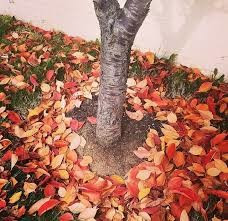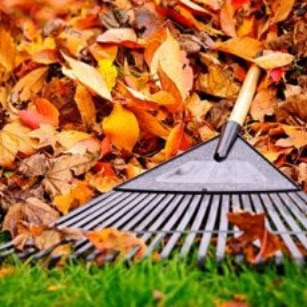Fall(ing) Leaves
What do we do with them?

Crisp air, colorful leaves, pumpkins (and pumpkin flavored things) as far as the eye can see… Fall is finally here! While most people think fondly of fall foliage, it’s what comes shortly after that can cause major headaches (and backaches). Raking and disposing of the leaves!
Who doesn’t remember the joy of being a kid and spending autumn afternoons jumping in to freshly raked piles of leaves your parents made? Now as an adult our job isn’t jumping, but rather the raking. The big question that lingers is, what to do with all those vibrant leaves that were hanging on to your trees branches, just last week?
Who doesn’t remember the joy of being a kid and spending autumn afternoons jumping in to freshly raked piles of leaves your parents made? Now as an adult our job isn’t jumping, but rather the raking. The big question that lingers is, what to do with all those vibrant leaves that were hanging on to your trees branches, just last week?
The important thing to remember is that even though we are in a City, the natural cycle of leaves is to fall, decompose into the soil and become organic matter. The lack of “soil” and the high amount of impervious surface prevents this cycle. So what to do? 

- If you have a lawn, ideally you can mow them in to your grass and keep the cycle intact.
- Shredded leaves make excellent mulch for garden beds, flowerbeds, or trees. Helping prevent weeds as well as breaking down and adding nutrients to the soil.
- Add them to/start a compost pile! Most things added are high in nitrogen (coffee grinds, egg shells, fruits & veggies)
- Make leaf mold (soil conditioner) by wetting the leaves, adding a little bit of nitrogen-rich material (compost) in a black plastic bag. Shake up, add a few slices to let in oxygen and let sit for six months. This can be done with out bag, just takes much longer.
- Halloween/ Fall decorations! Stuff a scarecrow, or some of those orange plastic bags with the jack-o-lantern faces printed on the front. Lots of crafts can be done for Thanksgiving centerpieces using fall leaves.
If none of these things are possible, Baltimore City’s DPW has you covered with leaf and yard waste collection, which started last Monday. Leaf Collection Season is from Oct. 17-Jan. 9. Citizens must call 311 before 6PMon Sunday, to schedule a special Monday collection (of up to 20 bags). Additionally you can put 5 bags of leaves/yard waste can be put out on your regularly scheduled trash collection day. You may also take your bags to any Citizen Drop-off Center. Yard waste collected by DPW goes to Baltimore's energy-from-waste facility, the Baltimore Wheelabrator.
by Charles Murphy, TreeBaltimore Operations Manager





